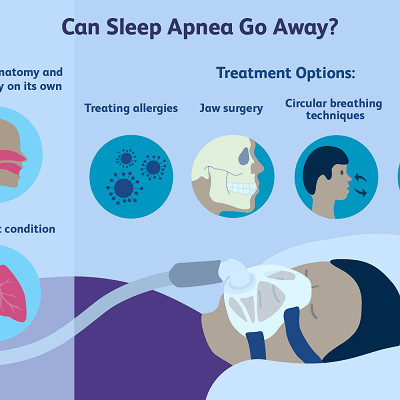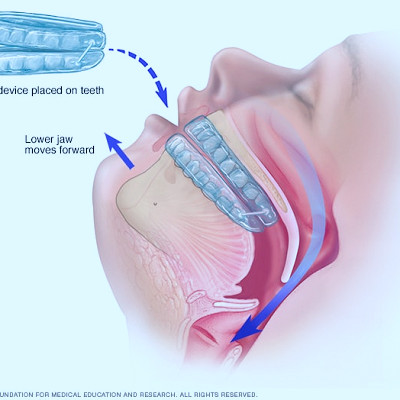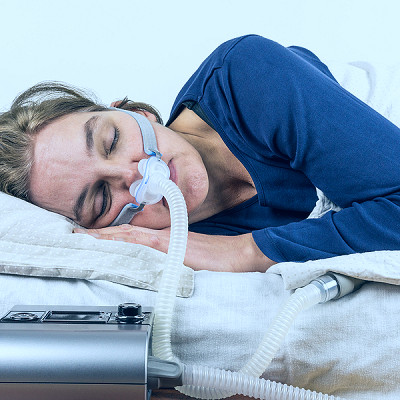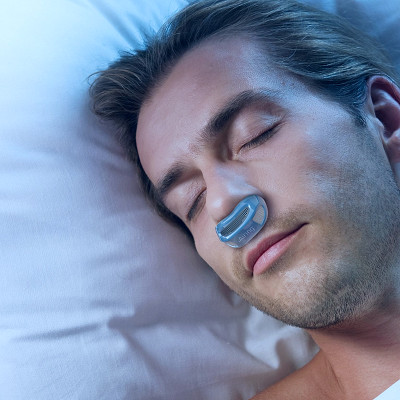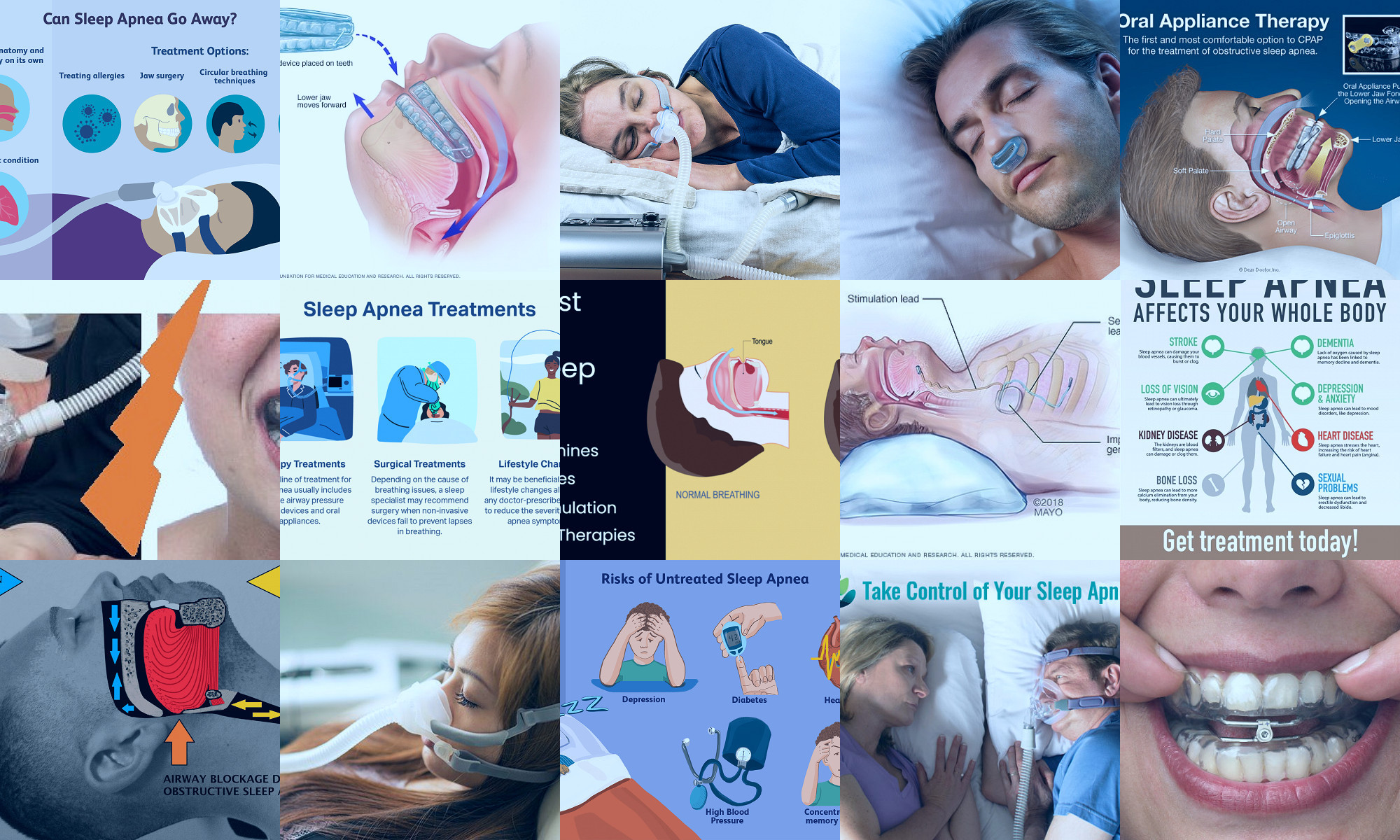 Jarlat Maletych/Shutterstock
Jarlat Maletych/Shutterstock
Features
Understanding Sleep Apnea
Sleep apnea is a serious sleep disorder that occurs when a person's breathing is interrupted during sleep. If left untreated, sleep apnea can result in a number of health problems, including high blood pressure, stroke, heart failure, irregular heartbeats, and diabetes.
Recognizing the Symptoms
Common signs of sleep apnea include loud snoring, episodes of breathing cessation during sleep, abrupt awakenings accompanied by shortness of breath, awakening with a dry mouth or sore throat, and difficulty staying asleep.
The Role of Lifestyle Changes
Lifestyle modifications can significantly impact sleep apnea. Weight loss, regular exercise, reducing alcohol consumption, and quitting smoking can all contribute to the reduction of sleep apnea episodes.
Importance of Sleep Position
Sleeping on the side or abdomen rather than on the back can help prevent the collapse of the tongue and soft palate into the back of the throat, which can obstruct the airway.
Continuous Positive Airway Pressure (CPAP)
This is the most common treatment for moderate to severe sleep apnea in adults. A CPAP machine uses a mask that fits over your nose and/or mouth and gently blows air into your airway to help keep it open during sleep.
Oral Appliance Therapy
Dental devices designed to keep the throat open can be effective in treating mild to moderate sleep apnea. These devices help prevent the collapse of the tongue and soft tissues in the back of the throat.
Surgical Interventions
In some cases, surgery may be necessary to remove excess tissue from the throat or nose, or to correct structural issues contributing to sleep apnea.
Upper Airway Stimulation
This is a newer treatment, involving a small pulse generator implanted under the skin in the upper chest. It monitors your body's natural breathing pattern and mildly stimulates nerves to keep airways open.
Hypoglossal Nerve Stimulation
This procedure involves implanting a device that stimulates the hypoglossal nerve, which controls tongue movement, preventing the tongue from blocking the airway.
Nasal EPAP
This is a small device placed over the nostrils before going to sleep. It acts as a one-way valve to allow air into the nostrils but not out. This creates a slight pressure that helps keep airways open.
The Role of Nutrition
A balanced diet rich in fruits, vegetables, lean proteins, and whole grains can contribute to overall health and weight management, potentially reducing the severity of sleep apnea.
Regular Health Check-ups
Regular health check-ups can help detect sleep apnea at an early stage, enabling timely treatment and preventing complications.
Yoga and Breathing Exercises
Regular practice of yoga and deep breathing exercises can strengthen the muscles in the airway, making them less likely to collapse.
Holistic Therapies
Some people find relief from sleep apnea through acupuncture, herbal remedies, and other holistic treatments. However, it's important to discuss these options with a healthcare provider.
Limiting Sedative Use
Sedatives and sleeping pills can relax the muscles in the throat, increasing the risk of sleep apnea. It's important to use these medications under the supervision of a healthcare provider.
Dealing with Nasal Congestion
Using a saline nasal spray or a nasal decongestant can help reduce nasal congestion, which can contribute to sleep apnea.
The Power of Hydration
Staying well-hydrated can keep your nasal and throat passages lubricated, helping to prevent snoring and sleep apnea.
Importance of Regular Sleep Schedule
Maintaining a regular sleep schedule can help regulate your body's natural sleep-wake cycle, reducing the incidence of sleep apnea.
Limiting Caffeine and Heavy Meals Before Bed
Consuming caffeine or heavy meals close to bedtime can interfere with sleep and might increase the risk of sleep apnea.
The Role of Professional Help
If lifestyle changes are not enough to manage sleep apnea, it's important to seek professional help. Sleep specialists and pulmonologists can provide a comprehensive treatment plan tailored to individual needs.
Interesting notes and facts
1. Understanding Sleep Apnea: Sleep apnea is a serious sleep disorder, characterized by repeated interruptions in breathing during sleep. These pauses can last for a few seconds to minutes and may occur 30 times or more within an hour. The main types of sleep apnea are Obstructive Sleep Apnea (OSA), Central Sleep Apnea (CSA), and Mixed Sleep Apnea.2. The Dangers of Sleep Apnea: Sleep apnea can pose severe health risks if left untreated, including high blood pressure, heart disease, stroke, diabetes, depression, and worsening of ADHD. Moreover, sleep apnea can lead to poor performance in everyday activities, such as at work and school, and can decrease overall quality of life.
3. CPAP Therapy: Continuous Positive Airway Pressure (CPAP) therapy is a common treatment for obstructive sleep apnea. The device uses a mask that fits over your nose and/or mouth and gently blows air into your airway to help keep it open during sleep. It's considered the gold standard treatment for sleep apnea.
4. Oral Appliances: For those who find CPAP uncomfortable, oral appliances designed to keep the throat open, such as mandibular advancement devices, could be an alternative. These devices, which look like sports mouthguards, work by moving the lower jaw forward to relieve snoring and mild to moderate sleep apnea.
5. Surgery: In severe cases, doctors may recommend surgery to treat sleep apnea. Procedures could include Uvulopalatopharyngoplasty (removing excess tissue from the throat), Mandibular/maxillary advancement surgery (repositioning the jaw), and Tracheostomy (creating a new air passage).
6. Lifestyle Changes: Simple lifestyle changes can also help to alleviate sleep apnea symptoms. These include losing weight, quitting smoking, avoiding alcohol and sedatives, and changing sleep positions to improve breathing.
7. Yoga: Regular exercise can improve overall health and help to reduce sleep apnea symptoms. In particular, yoga can enhance energy levels, increase oxygen flow, and strengthen the heart - all beneficial effects for those suffering from sleep apnea.
8. Healthy Diet: A balanced, nutritious diet can help manage sleep apnea. Eating lean proteins, fruits, vegetables, and whole grains can aid in maintaining a healthy weight and reducing the risk of sleep apnea.
9. Acupuncture: Some studies suggest that acupuncture can help to improve sleep apnea by enhancing the brain's capacity to communicate with the respiratory system. However, more research is needed to confirm its effectiveness.
10. Consider Natural Remedies: Certain natural remedies, like herbal teas, essential oils, and supplements such as Valerian Root and Chamomile, have been suggested to help manage sleep apnea symptoms. However, it's essential to consult with a healthcare provider before starting any new treatment regimen.
Vocabulary
- Sleep Apnea – A serious sleep disorder that occurs when a person's breathing is interrupted during sleep.
- Continuous Positive Airway Pressure (CPAP) – A type of therapy that uses mild air pressure to keep the airways open, often used in treating sleep apnea.
- Bi-Level Positive Airway Pressure (BiPAP) – A device that helps to get more air into the lungs and clear out carbon dioxide, used especially for sleep apnea.
- Sleep Study – A test that records the activity of your body during sleep.
- Polysomnography – A type of sleep study that measures a variety of signals during sleep using electrodes placed on the body.
- Epworth Sleepiness Scale – A questionnaire to measure daytime sleepiness, often used to diagnose sleep apnea.
- Apnea-Hypopnea Index (AHI) – A measure of the severity of sleep apnea.
- Hypopnea – Partial blockage of the airway that leads to an airflow reduction and decreased oxygen level in blood.
- Oxygen Saturation – The amount of oxygen in the blood.
- Obstructive Sleep Apnea (OSA) – The most common form of sleep apnea, caused by a blockage of the airway.
- Central Sleep Apnea (CSA) – A less common form of sleep apnea that involves the central nervous system.
- Positional Therapy – A treatment approach that involves changing sleeping positions to improve breathing.
- Weight Loss – Often recommended for overweight or obese people who have sleep apnea.
- Oral Appliance – A device worn in the mouth to keep the throat open.
- Mandibular Advancement Devices (MAD) – A specific type of oral appliance that moves the jaw forward to open up the airway.
- Lifestyle Changes – Modifications such as quitting smoking or alcohol, which can help in managing sleep apnea.
- Upper Airway Resistance Syndrome (UARS) – A sleep disorder characterized by the narrowing of the airway that can lead to sleep apnea.
- Hypnotics – Medications used to induce sleep.
- Nasal Decongestants – Medication to relieve nasal congestion, often used in sleep apnea treatment.
- Nasal Steroids – Medication to reduce inflammation and swelling in the nasal passages.
- Sleep Hygiene – Practices that can help you get a good night's sleep.
- Tonsillectomy – Surgical removal of the tonsils, often used in treating sleep apnea in children.
- Adenoidectomy – Surgical removal of the adenoids, often used in treating sleep apnea in children.
- Uvulopalatopharyngoplasty (UPPP) – A surgical procedure to remove excess tissue in the throat to make the airway wider.
- Maxillomandibular Advancement (MMA) – A surgical procedure that moves the upper and lower jaw forward to increase the size of the airway.
- Tracheostomy – A surgical procedure to create a hole in the neck to bypass the blocked airway in severe sleep apnea.
- Hypoglossal Nerve Stimulation – A treatment that stimulates a nerve to keep the tongue in position and prevent it from blocking the airway.
- Inspire Therapy – A type of hypoglossal nerve stimulation that is implanted under the skin.
- Positive Airway Pressure (PAP) Therapy – A common treatment that uses air pressure to keep the airways open during sleep.
- Automatic Positive Airway Pressure (APAP) Therapy – A type of PAP therapy that adjusts the air pressure automatically.
- Oxygen Therapy – Treatment that provides extra oxygen to the body.
- Adaptive Servo-Ventilation (ASV) – A therapy that uses a machine to increase air flow during sleep.
- Expiratory Positive Airway Pressure (EPAP) – A non-invasive treatment that uses a device to regulate air pressure during sleep.
- Sleep Architecture – The basic structure of normal sleep.
- Rapid Eye Movement (REM) Sleep – One of the stages of sleep, when most dreaming occurs.
- Non-Rapid Eye Movement (NREM) Sleep – The period of sleep other than REM sleep.
- Sleep Cycle – The progression through the various stages of NREM and REM sleep.
- Insomnia – Difficulty falling asleep or staying asleep.
- Restless Legs Syndrome (RLS) – A condition that causes an irresistible urge to move the legs, often disturbing sleep.
- Periodic Limb Movement Disorder (PLMD) – A condition characterized by jerking or twitching movements of the limbs during sleep.
- Narcolepsy – A neurological disorder that affects the control of sleep and wakefulness.
- Hypersomnia – Excessive sleepiness.
- Sleep Paralysis – A temporary inability to move or speak while falling asleep or
